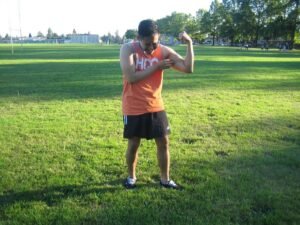The distal biceps tendon is described as a durable band of connective tissue that connects the lower part of the biceps muscle in the upper arm to the bones in the elbow. If an individual forcefully straightens his/her elbow against resistance, it can lead to a complete or partial rupture of the distal biceps tendon. Always bear in mind that this type of injury is considered rare. Once an individual is suspected with this condition, it is vital to seek immediate medical care since it cannot heal on its own.
Once an individual is suspected with this type of injury, do not hesitate to schedule an appointment with a doctor so that proper assessment can be carried out as well as start the appropriate treatment.
Popping sound and pain
The tears on the distal biceps tendon often cause a perceivable popping sound when the tendon rips away from the bone or muscle at the elbow. The abrupt, intense pain typically occurs at the site of injury. Initially, the pain along the front aspect of the elbow can be intense. After some time, the pain in the elbow can progressively subside when there is no longer any tension placed on the torn tendon. The individual should take some time away from any aggravating activities to minimize the discomfort.

Appearance
Tears on the distal biceps tendon release the base of the biceps muscles away from the elbow. If this occurs, the muscle can withdraw and develop a large-sized mass in the upper arm. In addition, the absence of the distal biceps tendon right after a rupture can lead to the presence of a small-sized break under the skin at the front part of the elbow.
The skin that surrounds the front part of the elbow can appear severely enlarged or engorged after sustaining a tear on the distal biceps tendon. In addition, the small blood vessels under the skin can end up damaged during the rupture of the tendon which can cause discoloration. The bruising can manifest around the elbow or even radiate into the forearm. The affected skin is usually painful to the touch or tender.
Weakness
Once the distal biceps tendon ruptures, the biceps muscle is no longer held in a taut manner and could no longer contract normally while the individual is engaged in physical activity. Supination or rotation of the forearm into a palm-up position is weak after sustaining this type of injury. It is also hard for the individual to bend the affected elbow. In addition, the sensation of weakness can drastically disrupt with the daily activities such as picking up or reaching up for objects.
